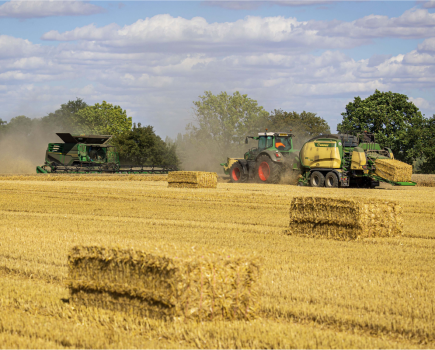Problem solver Mike Donovan returns with his monthly basket of tips and tricks, sent in by readers and all intended to make farming life just that little bit easier – and, of course, at minimal extra expense to the business in question. Are you able to add to Mike’s collection? If so, please contact him using the details at the bottom of page 35 Umbilical spreading presents a seemingly insurmountable problem when a road separates the lagoon from the farm’s fields. Laying the pipe across the road is not so simple, even if it’s a narrow lane. Many contractors build ramps that allow traffic to drive over the pipe, but these aren’t always 100% successful, especially when vehicles with lowered suspensions opt to take a running jump. Ouch! Carmarthenshire ag contractor Huw Davies built the pictured gantry for attaching to any loader. He designed it to fold in half, so the 6m reach is reduced to sub-3m, making it an outfit that can be taken down the road – with care. The slurry pipe fits in a length of 150 x 100mm channel, complete with locking pieces over the top of the pipe to prevent it from jumping out. With the gantry raised over the lane, traffic can drive underneath without danger. To give one example of the potential problems associated with the ag business’s previous ramp system: a local minibus hit the ramp so hard one day that its sump plug was knocked off, an incident that only came to light when the vehicle’s engine seized some way down the road. Storing oil barrels without bunds is one of the quickest ways to drop points on a farm inspection. For that – and other reasons, of course – the practice is not to be encouraged. Warwickshire farmer John Smith lays his barrels on cradles that, in turn, are stood within a large bund, which was constructed out of an old domestic oil tank. He cut the narrow tank vertically so that the former tank sides now become the barrel bund’s drip-collecting base. Tidying up the bund edges and then applying a couple of coats of paint produce a smart finish. Rocks and stones are a major issue on farms in many parts of the country, causing expensive damage to high-value kit. And though undoubtedly a pain, the only practical option is often to ‘pick ‘em and dump ‘em’ – not the most popular job. So that’s why Strabane farmer Albert O’Neill came up with the idea of a rock fork, which allows him to pick stones at the same time as he is ploughing a field. No separate stonepicking operation is required, as the big fork mounts on the front of the farm’s New Holland plough tractor. “I’ll often be lifting stones the size of a TV set when I’m ploughing. I then carry them in the fork and dump them in the hedge when I arrive at the headland.” Close-mounted to the ploughing tractor, the fork crowds and tips further than normal, courtesy of Mr O’Neill’s farm-built top link, giving the attachment increased crowding and digging capability. When shortened, the link length measures around 450mm; when wound out, the figure is 1.25m. The sleeves on bale handlers need to keep turning to do their job properly, so several shots of grease never go amiss. Unfortunately, this greasing job is made harder by McHale fitting a retainer that has to be removed before the long sleeve can be slid off. Norfolk farmer Ron Giles’s solution is to replace the original retainer with a washer with one flat side, which is then secured by the original McHale locking nut. To remove the sleeve, Mr Giles now simply loosens the locking nut sufficiently to allow him to rotate the washer. The flat washer side is then in position to enable the sleeve’s collar to pass – and the sleeve itself to slide off. With the sleeve simpler to remove, this encourages more regular lubrication.
From the workshop
Problem solver Mike Donovan returns with his monthly basket of tips and tricks, sent in by readers and all intended to make farming life just that little bit easier – and, of course, at minimal extra expense to the business in question. Are you able to add to Mike’s collection? If so, please contact him […]
Subscription Required
Subscribe to profi now to unlock this article and get access to over 3,500 tests and reviews in our Test Centre.
Alternatively, you can purchase this article for a one-off payment, by selecting ‘Purchase One-Off Access’.
Single access purchasers must complete the transaction at shop.kelsey.co.uk and click ‘Back to Main Site’ to download this PDF.
Login To Unlock
To access your online content, you will now need to use your shop.kelsey.co.uk username and password. Your previous login details are no longer valid. If you haven't set up a shop.kelsey.co.uk account, please follow the simple instructions






